Ertach Kernow - Cornish Christmas' Past
Cornish Christmas - The Bible gives no date for the birth of Jesus, so what better way to create a day than for the 4th century Pope Julius I to usurp an existing date of celebration. The winter solstice of 21st December has been celebrated back to Neolithic times evidence coming from tomb construction and archaeological excavations. Later the Roman’s celebrated Saturnalia, which began on December 17th lasting five days. The ancient Britons, those we now term Celtic, and other pre-Christian ancestors celebrated by collecting and using mistletoe, holly and ivy, keeping a Yule log fire burning for twelve days. The Roman Gaius Plinius Secundus, better known as Pliny the Elder, wrote in the first century about the druidic use of mistletoe and the associated ceremonies.
Christmas celebrations consisted of feasting and games through the medieval and Tudor periods. However, a pause to Christmas festivities took place during the mid-17th century. The puritan commonwealth regime banned festivities including carol singing in 1644, these often continued clandestinely. In 1647 Christmas feasting was abolished and 1656 saw more draconian measures with inspections by soldiers preventing any form of Christmas celebration whatsoever. All this misery came to an end in 1660 with the restoration of the monarchy.
Moving forward a couple of hundred years many changes took place during the Victorian Age ushering in Christmas celebrations as we would mostly recognise them. This included Christmas trees, cards, crackers and Santa Claus as children know him today. Father Christmas was originally included in old English midwinter festivals, normally dressed in green as a sign of the returning spring often played by mummers.
Art throughout the ages from medieval times helps illustrate the changes. The theme of Christmas produced medieval works showing activities, such as mummers, highly religious masterpieces such as the 16th century ‘Adoration of the Magi’ through to Victorian fun cartoons in Punch such as ‘Father Christmas up to date’ from 1896.
The Cornish folklorist and poet Margaret Ann Courtney was born in Penzance in 1834. She provided a background on many festivities and traditions carried out in Cornwall, including Christmas, in her book ‘Cornish Feasts and Folklore’ published in 1890. Here are a few extracts of Cornish Christmas traditions from Courtney’s book.
‘At Falmouth the lower classes formerly expected from all the shop-keepers, of whom they bought any of their Christmas groceries, a slice of cake and a small glass of gin. Some of the oldest established tradespeople still observe this custom ; but it will soon be a thing of the past.’
‘In some parts of [Cornwall] it is customary for each household to make a batch of currant cakes on Christmas-eve. These cakes are made in the ordinary manner, coloured with saffron, as is the custom in these parts. On this occasion the peculiarity of the cakes is, that a small portion of the dough in the centre of each top is pulled up and made into a form which resembles a very small cake on the top of a large one, and this centre-piece is usually called ‘the Christmas.’ Each person in a house has his or her especial cake, and every person ought to taste a small piece of every other person's cake. Similar cakes are also bestowed on the hangers-on of the establishment, such as laundresses, sempstresses, charwomen, etc.,’
‘The church towers, too, are sometimes illuminated. This of course, on the coast can only be done in very calm weather. The tower of Zennor church (Zennor is a village on the north coast of Cornwall, between St. Ives and St. Just) was-lit up in 1883, for the first time since 1866.’
‘The choir from the parish church and dissenting chapels go from house to house singing ‘curls’ (carols), for which they are given money or feasted; but the quaint old carols, ‘The first good joy that Mary had,’ ‘I saw three ships come sailing in,’ common forty years ago, are now never heard. The natives of Cornwall have been always famous for their carols; some of their tunes are very old.’
‘At the plentiful supper always provided on [Christmas Eve], egg-hot, or eggy-hot, was the principal drink. It was made with eggs, hot beer, sugar, and rum, and was poured from one jug into another until it became quite white and covered with froth. A sweet giblet pie was one of the standing dishes at a Christmas dinner—a kind of mince-pie, into which the giblets of a goose, boiled and finely chopped, were put instead of beef. Cornwall is noted for its pies, that are eaten on all occasions ; some of them are curious mixtures, such as squab-pie, which is made with layers of well-seasoned fat mutton and apples, with onions and raisins. Mackerel pie: the ingredients of this are mackerel and parsley stewed in milk, then covered with a paste and baked. When brought to table a hole is cut in the paste, and a basin of clotted cream thrown in it. Muggetty pie, made from sheep's entrails (muggets), parsley, and cream.’ It was said ‘The devil is afraid to come into Cornwall for fear of being baked in a pie.’
‘From Christmas to Twelfth-tide parties of mummers known as `Goose or Geese-dancers' paraded the streets in all sorts of disguises, with masks on. They often behaved in such an unruly manner that women and children were afraid to venture out. If the doors of the houses were not locked they would enter uninvited and stay, flaying all kinds of antics, until money was given them to go away. A well-known character amongst them, about fifty years ago (1862), was the hobby-horse, represented by a man carrying a piece of wood in the form of a horse's head and neck, with some contrivance for opening and shutting the mouth with a loud snapping noise, the performer being so covered with a horse-cloth or hide of a horse as to resemble the animal, whose curvetings, biting and other motions he imitated. Some of these guise-dancers occasionally masked themselves with the skins of the head of bullocks having the horns on. These ‘goose-dancers’ became such a terror to the respectable inhabitants of Penzance that the Corporation put them down about ten years since, and every Christmas-eve a notice is posted in conspicuous places forbidding their appearance in the streets, but they still perambulate the streets of St. Ives. Guise-dancing wit must have very much deteriorated since the beginning of the present century, as writers before that time speak of the mirth it afforded ; and the saying, ‘as good as a Christmas-play,’ is commonly used to describe a very witty or funny thing.’
The tradition of Wassel, blessing the apple orchards, may have been introduced to Cornwall by the Danes in the 9th century. The term derived from the Old Norse toast ‘Ves heill’ translated as ‘be in good health’. There is a mention of Wassel during the middle play of the late 14th century Ordinalia cycle. Happily, now being revived after many years in abeyance this tradition is now increasingly carried out during January. However, Miss Courtney gives examples of this happening throughout Cornwall on Christmas Eve in the 19th century through an account by an anonymous writer of a Christmas custom in East Cornwall.
‘In some places the parishioners walk in procession, visiting the principal orchards in the parish. In each orchard one tree is selected, as the representative of the rest; this is saluted with a certain form of words, which have in them the form of an incantation. They then sprinkle the tree with cider, or dash a bowl of cider against it, to ensure its bearing plentifully the ensuing year. In other places the farmers and their servants only assemble on the occasion, and after immersing apples in cider hang them on the apple-trees They then sprinkle the trees with cider ; and after uttering a formal incantation, they dance round it (or rather round them) and return to the farmhouse to conclude these solemn rites with copious draughts of cider.’
Although wonderful to see some old Cornish traditions revived, having fallen out of fashion, some culinary examples are perhaps best just remembered. This weeks Cornish phrases are those that can be used over the festive period. The QR Code or website homepage will take readers to the audio files this week spoken by Elizabeth Carne, tutor at Newquay Cornish Language Class and immediate past Grand Bard of Gorsedh Kernow.
At the time of writing there is hope that we can again enjoy Christmas as we have done in the recent past. May I wish you ‘Nadelik Lowen ha Bledhen Nowydh Da’.
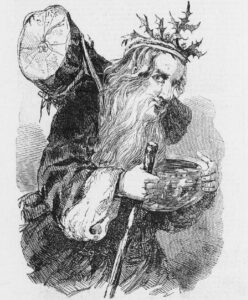
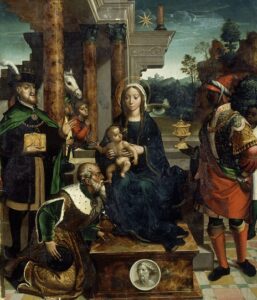
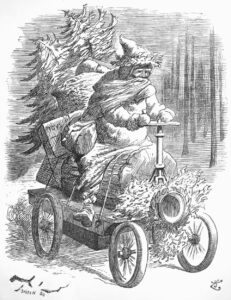
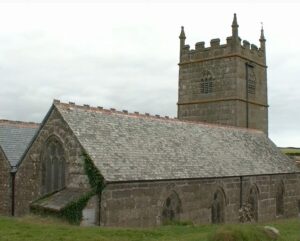
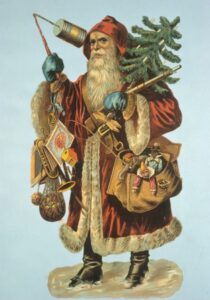
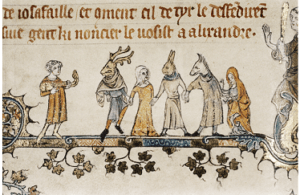
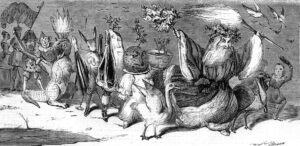
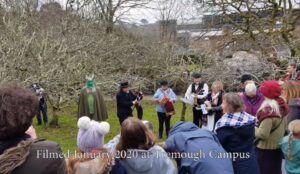
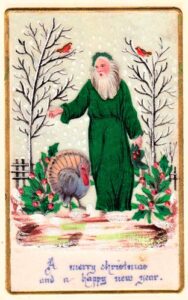
![[78] Voice - Ertach Kernow- 221221A Christmas past [S] Ertach Kernow - Cornish Christmas past](https://www.cornwallheritage.com/wp-content/uploads/2021/12/78-Voice-Ertach-Kernow-221221A-Christmas-past-S-1-223x300.jpg)
![[78] Voice - Ertach Kernow- 221221B Christmas past [S] Ertach Kernow - Cornish Christmas past](https://www.cornwallheritage.com/wp-content/uploads/2021/12/78-Voice-Ertach-Kernow-221221B-Christmas-past-S-225x300.jpg)
![[78] Ertach Kernow Heritage Column - 22nd December 2021 - Building preservation successes Ertach Kernow Heritage Column - 22nd December 2021 - Building preservation successes](https://www.cornwallheritage.com/wp-content/uploads/2021/12/78-Ertach-Kernow-Heritage-Column-22nd-December-2021-Building-preservation-successes-277x300.jpg)